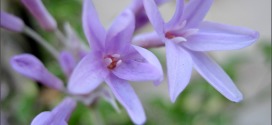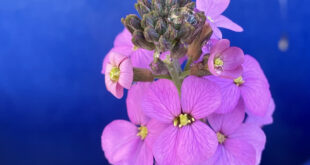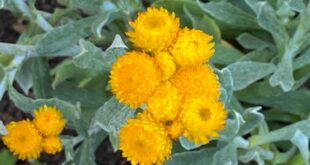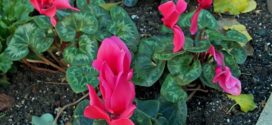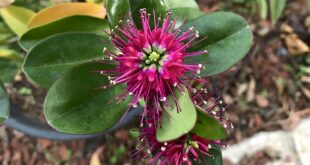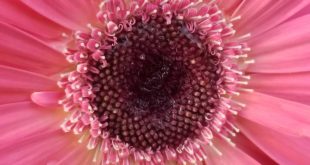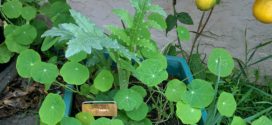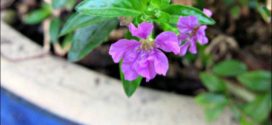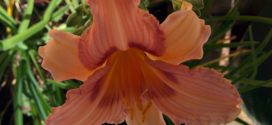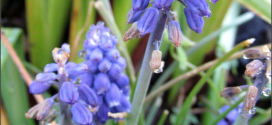Society garlic is an attractive ornamental plant from South Africa whose leaves have a garlicky odor. It belongs to the lily family — as do onions and garlic — but to a different genus, entirely restricted to Africa, which includes about 24 species. The genus name Tulbaghia honors Ryk Tulbagh, an 18th-century Dutch governor of the Cape of Good Hope; …
Read More »Tag Archives: perennial
Bowles Mauve Wallflower
A classic perennial wallflower selection with profuse clusters of fragrant, mauve flowers over an exceptionally long season; nearly year-round in warm coastal areas. Shrubby, upright form is perfect for mixed borders, cottage and butterfly gardens. Colorful, easy to grow and drought tolerant once established.
Read More »Helichrysum argyrophyllum
Helichrysum argyrophyllum, the Golden Guinea Everlasting Daisy, makes a great groundcover in open sunny spots and is perfect for sunny rock-gardens. This South African native has small silver/grey leaves and from late summer into autumn it is covered with masses of bright yellow everlasting daisies. This is a tough plant that will survive heat, drought and even frost. We purchased …
Read More »Cyclamen – Latinia Salmon
Cyclamen is a great winter-flowering plant that loves light shade. You can grow in indoors or out. I am currently using them as a winter highlight in my former firepit. The red cyclamen is classic for the winter holidays. This salmon variety is also pretty. Strong stems bear vibrant, filly flowers well above attractive, silver-mottled leaves. In the summer, the …
Read More »Hebe Speciosa
Hebe speciosa, its many cultivars and hybrids are very popular garden plants in area with suitably mild temperate climates. They appeal because of their lush evergreen foliage, showy flowerheads, long blooming season and ease of cultivation. They are used to form borders, low hedges, bushes and potted patios for patios and terraces. They are ideal for coastal gardens due to …
Read More »Gerbera Daisy
New to our Sunnyvale garden in 2020 are Gerbera daisy flowers. The blooms are large (4 inches across) and have a central disk that can be yellowish, light-bronze, or dark in color. This disk is surrounded by rays that come in a variety of colors. The colors are most commonly yellow, red, or orange. However, growers have also produced varieties …
Read More »Violetto Artichoke Plant
From the north of Italy, the artichoke of aristocrats. This choke has small oval slightly elongated head 3 inches wide by 5 inches long. mouthwatering flavor. Fruit is more elongated than the green globe type. The edible thistle first appeared in Italy and Sicily as early as 200-300 B.C. It may be a descendant of C. cardunculus, the wild cardoon …
Read More »Mexican Heather
Cuphea hyssopifolia, commonly called Mexican heather, is native from Mexico to Guatemala. It is a rounded, densely branched 1-2’ tall tropical sub-shrub. It produces quaint, small, trumpet-shaped flowers with six spreading lavender petals and green calyx tubes. Flowers appear singly in the leaf axils along stems crowded with lance-shaped glossy green leaves (to 3/4” long). Blooms profusely summer to frost. …
Read More »Daylily
The scientific name for daylily is Hemerocallis. The word Hemerocallis is derived from two Greek words meaning “beauty” (callos) and “day” (hemera), referring to the fact that each flower lasts only one day. To make up for this, there are many flower buds on each daylily flower stalk, and many stalks in each clump of plants, so, the flowering period …
Read More »Muscari – Grape Hyacinth
Grape Hyacinth is one of the first spring flowers and has a great fragrance. The first time you plant them should be in November. The plants naturalize (meaning that the next year’s flowers are the same). Severe poisoning from hyacinth or tulip poisoning is often seen when dogs dig up freshly planted bulbs or having access to a large bag …
Read More »